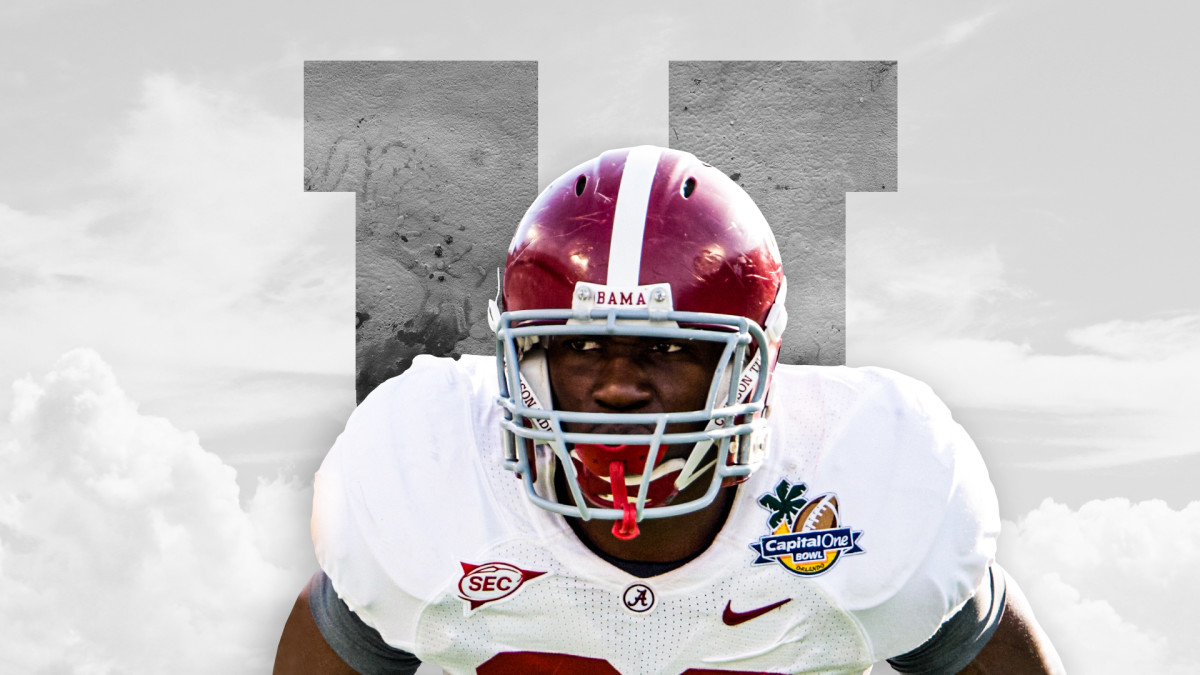Alabama Is the New Linebacker U.
We determined each “Position U.” by measuring what every college should strive to do, in sports and beyond: Prepare students for professional careers. For the full explanation of our scoring system, scroll to the bottom of this article.
Penn State has long been known as Linebacker U., but Sean Lee, now a rotational player in Dallas, is the program’s last “great” linebacker still active in the NFL. In fact, aside from Lee and NaVorro Bowman, no Nittany Lions linebacker who entered the league since 2010 has been a starter for any NFL team for more than a season.
That leaves the Linebacker U. competition to two SEC powerhouses: Alabama and LSU, who have each put a dozen linebackers into the NFL since 2010.
For our project, we considered linebackers to be off-the-ball (aka “stack”) LBs, as opposed to stand-up edge players (like Von Miller). Those edge players will be included in Defensive Line U.
* * *
WELCOME TO POSITION U.: Quarterback U. | Wide Receiver U. | Offensive Line U. | Running Back U. | Tight End U. | Defensive Line U. | Defensive Back U.
* * *
LINEBACKER U.: ALABAMA

1. Alabama, 47 points
2. LSU, 44
3. Penn State, 42
4(tie). Boston College, 40
4(tie). UCLA, 40
6. Florida, 33
7. Washington, 28
8. Georgia, 27
9. Florida State, 25
10. Ohio State, 24
The Tide’s five first-rounders give them the edge, making them the new Linebacker U. As for Penn State, their standing (third) is almost entirely due to two ’10 draftees (Lee and Bowman), and Boston College picked up 30 of its 40 points, enough for fourth place, from Luke Kuechly.
Unless you’re a Minnesota Vikings fan, few would guess that right behind those powerhouses is UCLA. The Bruins had eight linebackers drafted last decade and, thanks to Eric Kendricks and Anthony Barr, a linebacker representing them in the Pro Bowl five straight seasons from 2015-19 (active streak). And Utah State is 11th in our rankings, on the strength of Bobby Wagner and Nick Vigil, who’ve combined for 155 career starts.
* * *
ALUMNI FOR TOP THREE
ALABAMA
Dont'a Hightower (2012 first round, 99 starts)
Rolando McClain (2010 8th overall, 61 starts)
C.J. Mosley (2014 first round, 79 starts)
Rashaan Evans (2018 first round, 23 starts)
Reuben Foster (2017 first round, 16 starts)
Reggie Ragland (2016 second round, 32 starts)
Mack Wilson (2019 fifth round, 14 starts)
Shaun Dion Hamilton (2018 sixth round, 4 starts)
Nico Johnson (2013 fourth round, 3 starts)
Xzavier Dickson (2015 seventh round)
Jerrell Harris (2012 undrafted)
Chavis Williams (2011 undrafted)
LSU
Deion Jones (2016 second round, 51 starts)
Devin White (2019 5th overall, 13 starts)
Kelvin Sheppard (2011 third round, 63 starts)
Kwon Alexander (2015 fourth round, 54 starts)
Kevin Minter (2013 second round, 46 starts)
Perry Riley Jr. (2010 fourth round, 74 starts)
Kendell Beckwith (2017 third round, 9 starts)
Duke Riley (2017 third round, 16 starts)
Lamin Barrow (2014 fifth round, 1 start)
Corey Thompson (2018 undrafted, 1 start)
Jacob Cutrera (2010 undrafted)
Lamar Louis (2016 undrafted)
PENN STATE
NaVorro Bowman (2010 third round, 84 starts, 4x All-Pro)
Sean Lee (2010 second round, 90 starts, All-Pro)
Gerald Hodges (2013 fourth round, 32 starts)
Nate Stupar (2012 seventh round, 11 starts)
Josh Hull (2010 seventh round, 1 start)
Michael Mauti (2013 seventh round, 4 starts)
Jason Cabinda (2018 undrafted, 3 starts)
Mike Hull (2015 undrafted, 5 starts)
Brandon Bell (2017 undrafted)
Glenn Carson (2014 undrafted)
* * *
OUR SCORING SYSTEM
In order to make it modern, we used a 10-year data set. Dipping further back would mean going across different coaching eras at the college level, as well as including a lot of players who are no longer active in the NFL. (We did run an unofficial 20-year data set for the quarterback position, which you can read about at the bottom of this article.)
We came up with a scoring system that balanced not just the quantity of players programs put into the NFL, but the quality of those players' careers. One measure we used is draft position—an inexact but still relevant measure of a player's approximate value when he left college. We credited players for career games started. But rather than assigning a point value to every game started, which would weigh too heavily in favor of older players, we lessened that effect by using ranges.
We also awarded points for the highest achievements (MVP, and for non-quarterbacks, Offensive/Defensive Player of the Year and All-Pro) and awarded a smaller amount of credit for Rookie of the Year, an indication of a player's preparedness when entering the league. (We made the decision to exclude the Pro Bowl. Between fan voting and the league's need to dig deep into the pool of alternates with so many players dropping out annually, there's been a reduction in the legitimacy of that achievement.)
For all positions in this series, scoring is based on alumni who entered the NFL between 2010 and 2019 and were either (1) drafted or (2) undrafted but appeared in at least one game. Players who transferred during their college careers are counted only as part of the last program they played for. Players are only credited for the position at which they were drafted. Our full scoring system:
DRAFT POSITION
Top 10: 4 points
Round 1 (non-top 10): 3 points
Rounds 2-3: 2 points
Rounds 4-7: 1 point
Undrafted: 0 points
NFL GAMES STARTED
80-plus: 5 points
48 to 79: 4 points
16 to 47: 3 points
5 to 15: 2 points
1 to 4: 1 point
NFL AWARDS
Defensive Player of the Year: 4 points
First-Team All-Pro: 3 points
Defensive Rookie of the Year: 2 points
Research by Reid Foster and Gary Gramling.
• Question or comment? Email us.
